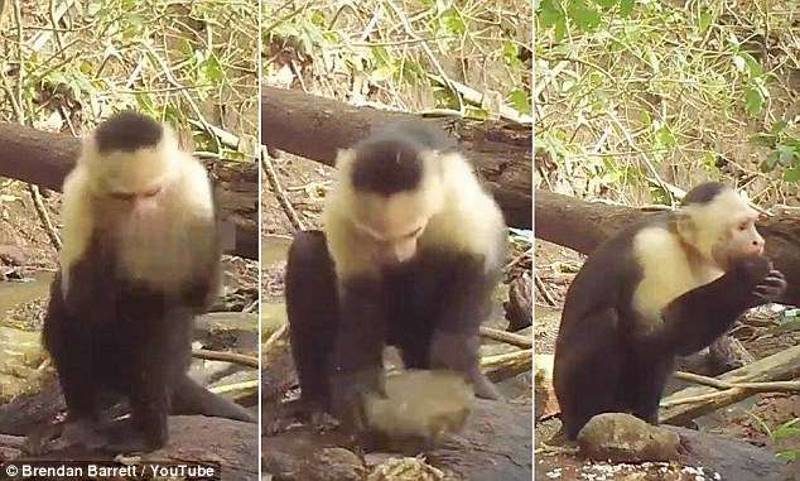
Chimpanzees in West Africa, macaques in Thailand and several species of tufted capuchin monkey living in South America use stone tools to access food. Brendan Barrett at the Max Planck Institute for Ornithology in Radolfzell, Germany, and his colleagues have now discovered that a species of non-tufted, slender-bodied capuchin also uses stone tools (bioRxiv, doi.org/crn7).
Camera traps showed that male capuchins in one corner of JicarÓn Island use stone tools to crack open coconuts, crabs and snails. Capuchins elsewhere on JicaroÓn don't use stone tools, and neither do those on nearby islands.
Barrett thinks several factors might have encouraged the capuchins to experiment with stone tools. There are no ground-based predators on JicaroÓn, so the monkeys can afford to spend more time on the ground with their attention focused on tool use. There are also relatively few easily accessible sources of food on the island, which makes it worthwhile for the capuchins to use stones to crack open tough nuts and shells.
But that doesn't explain why capuchins elsewhere on JicaroÓn, which also experience those conditions, don't seem to use stone tools.
Perhaps it takes a single hyper-intelligent individual to make the leap and begin using stone tools, with others then copying the idea. "Good innovations are pretty rare, but if they are adaptive they can take off," says Barrett.



Reader Comments
John of Salisbury used this phrase in a treatise on logic called Metalogicon, written in Latin in 1159. The gist of what Salisbury said is:
"We are like dwarfs sitting on the shoulders of giants. We see more, and things that are more distant, than they did, not because our sight is superior or because we are taller than they, but because they raise us up, and by their great stature add to ours."
Isaac Newton in a letter to his rival Robert Hooke in 1676, said:
"What Descartes did was a good step. You have added much in several ways, and especially in taking the colors of thin plates into philosophical consideration. If I have seen a little further, it is by standing on the shoulders of Giants."
In a couple of million years, when humans are traveling the Galaxy, the descendants of today's monkeys will be building iPhones, Tesla cars and weapons of mass destruction.